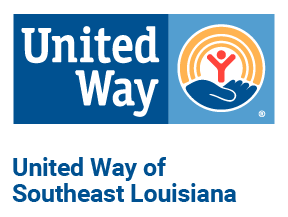Vanessa Greenslade, PhD, is United Way of Southeast Louisiana’s resident research and data expert. Vanessa works with our Community Impact team to bring a data-driven approach to our fight for the health, education, and financial stability of every person.
The updated United Way ALICE Report for Louisiana, released earlier this month, shows nearly 1 in 2 Southeast Louisiana (SELA) households (47 percent) struggled to make ends meet in 2016.
While statistics like this provide an essential high-level view of financial hardship in our region, the 2018 ALICE Report’s value goes much deeper. This blog offers a few of my takeaways from digging into the data.
ALICE households make above the Federal Poverty Level, but not enough to cover a basic Household Survival Budget (HSB) of housing, child care, food, transportation, health care, taxes, and technology. The number of Southeast Louisiana households living under the ALICE threshold (roughly $21,000 for a single adult and $59,000 for a family of two adults, one infant, and one preschooler) increased 5 percent from 2014-2016.
Examining how costs have fluctuated within the HSB gives a better understanding of why so many working households – across every demographic – are struggling.
Housing Costs Burden Single Households
The cost of housing increased 4 percent for single adults in Jefferson, Orleans, St. Bernard, St. Tammany, and Plaquemines parishes from 2014 to 2016. Housing accounts for 36 percent of the HSB for a single household – meaning even the most affordable option is over the 30 percent cost burden threshold defined by the U.S. Department of Housing and Urban Development. Housing for families in these parishes increased 2 percent, but the total remains under cost burden level. In Tangipahoa Parish, the cost of housing for single households increased over 12 percent to $606, 35 percent of the HSB.
The 2016 Louisiana floods caused widespread damage in our region, displacing residents and reducing available housing stock. This decreased supply and increased demand may have contributed to rising prices. We know ALICE households are particularly vulnerable to natural disasters, as they have little to no savings to weather the cost of rebuilding.
Quality Childcare Often out of Reach
Child care is a SELA family’s greatest expense at $1,098 a month for a licensed and accredited center. The cost of child care in SELA has increased an average 21 percent since 2014 – 30 percent in Tangipahoa and St. Tammany; 19 percent in Jefferson, Orleans, Plaquemines, and St. Bernard; and 8 percent in Washington.
Louisiana lacks quality, affordable early child care and education. According to the Louisiana Policy Institute for Children, only 15 percent of potentially eligible children under age four in Louisiana can access any public funding for a child care slot. This funding shortfall means many hardworking families are forced to dedicate a large percentage of their income to childcare and cannot save for emergencies or major purchases.
As a recent mother of an infant and a toddler, I was very fortunate to have my parents and in-laws take care of my children for the first years of their lives. However, as my children recently started daycare, I truly understand the financial burden that many families face to not only afford quality child care but also finish paying medical expenses from their pregnancy.
Lack of Healthcare Coverage
The HSB healthcare budget includes nominal out-of-pocket health care spending, medical services, prescription drugs, and medical supplies, as reported in the Consumer Expenditure Surveys, but not the cost of health insurance. ALICE does not qualify for Medicaid, but in many cases cannot afford even the Bronze Marketplace premiums and deductibles. Therefore, the ALICE Report calculates a healthcare budget as the penalty for not having coverage under the Affordable Care Act plus out-of-pocket healthcare spending.
Decreases: Food and Transportation Costs
It was not all bad news for the HSB in 2016. The cost of food and transportation decreased for all parishes in our service area. Transportation, ranging from 13-18 percent of the HSB for both single and family households in our region, saw an overall decrease of 5 percent from 2014 to 2016. Food costs dropped by 10 percent for single households and 1.5 percent for families.
Putting it all Together: Why ALICE Matters
Is your head spinning yet? The challenges ALICE and those in poverty face are numerous and complex. While the scope of the ALICE Report can be overwhelming, the in-depth data is key to understanding what holds ALICE and those in poverty back and identifying solutions to move them forward.
At United Way of Southeast Louisiana, much of our work – from community impact to public policy – supports ALICE families. Guided by our Blueprint for Prosperity, we are bringing people together to drive change and create pathways to prosperity for all. Join us.

Vanessa Greenslade, PhD
Data Analyst/Grant Writer
United Way of Southeast Louisiana
